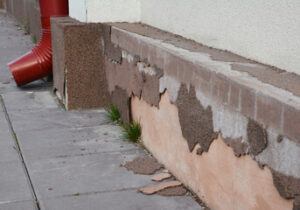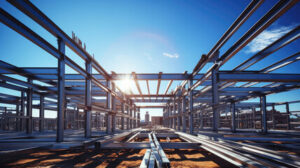Detecting foundation problems early and having them repaired by a professional can prevent the need for more extensive work in the future. It’s important to pay attention to small warning signs like zigzag wall cracks and sticky doors.

Foundation repair restores the original elevation a home was built at, closing cracks, aligning doors and windows and making sure everything works as it should. Choosing an experienced contractor with local knowledge. Contact Foundation Repair Greensboro NC for professional help.
Whether you have noticed wall cracks, floors that are uneven or your house has been shifting in its place, foundation underpinning, or strengthening, is necessary to protect the safety and integrity of your home. This involves adding structural supports below the existing foundation — either concrete footings or steel piers. This is a complex and disruptive repair process that requires a professional to ensure it meets local building codes and safety standards.
Underpinning works by transferring the load of your building to these new, robust supports. It is a solution for foundations that are sinking or heaving due to changes in soil conditions or excessive building weight. Poor construction, earthquakes, flooding or adding heavy equipment can all contribute to foundation problems and the need for underpinning.
Foundation underpinning is typically done in stages to limit disruption and maximize the stability of your structure. This allows the structure to be occupied while the work is being carried out.
It is essential that you have the foundation underpinned by a qualified and experienced structural engineer. This will help to ensure that the correct solution is designed for your specific foundation type, soil conditions and level of movement in the existing foundations.
If you do not choose a structural engineer to carry out the underpinning, then it is recommended that you have your soil tested by a competent soil engineer to determine if underpinning is suitable for your property. This will also identify and diagnose any existing footing movement that could reverse with a change in the moisture content of the soil.
Once the soil report has been completed, a detailed quotation will be provided for the underpinning solution that will include all of the necessary engineering and demolition work. Most underpinning contractors recommend that a series of ‘pins’ are placed under the existing foundation to distribute the loads over a larger area. The pins are essentially small piers that are screwed into the ground, like a clothesline pin, to support the weight of your building.
Other underpinning alternatives include mudjacking or polyurethane material. These methods do not provide a long-term solution to your problem, and are unlikely to stop the movement of your foundations.
Concrete Piers
The most common form of pier foundation is the concrete pier. These piers are installed underground by digging and drilling, then pouring concrete into them if using piers (also called pilings) or driving pre-formed concrete pieces into the ground with hydraulic pressure if using helical piers. Once cured, your contractor will lift and stabilize the sunken portions of your home using these piers.
Unlike wood piers, these concrete piers are more resilient and can withstand greater forces without cracking or shifting out of position. They also tend to require less maintenance and can last for decades or longer than their wooden counterparts.
Another advantage is that concrete piers can be installed underneath your home without disturbing its appearance. While a foundation repair contractor can use any number of materials to create these piers, concrete is ideal because it has great load-bearing capacity and is more stable than other types of footings.
Wood, on the other hand, has a number of structural disadvantages when used as a pier foundation. While wood can be treated to make it resistant to moisture, it degrades upon contact with soil and is thus an inferior material for a foundation pier. Wood piers can also rot or be damaged by termites and other pests.
When you choose concrete piers, you will get a cost-effective solution that can be adjusted as needed to meet future needs or changes in your home’s design. However, it is best to plan on future repairs and include these in your long-term budget.
For instance, if you notice the nails in your home’s walls popping out of their holes, this is a sign that your foundation is shifting and you may need to replace these piers at some point. It’s also possible that your piers will need to be replaced due to changing weather conditions in the Dallas area.
In this case, you’ll want to consider other solutions like epoxy injection to address current cracks and prevent water infiltration. In addition, you might want to consider slabjacking, or mudjacking, which involves injecting a concrete-like slurry mixture under your home to raise it and level it.
Steel Piers
When it comes to stabilizing and supporting buildings, steel piers—also known as push or resistance piers—are the heavy hitters. Compared to other foundation repair methods, they can handle greater loads and reach deeper into the soil to support your building. This deep support can reduce future movement and prevent further damage, saving you money in the long run.
If your home has experienced a significant shift in its foundation due to settlement, it’s time for structural repairs. This is especially true if you’re seeing widening cracks in walls or floors, a sagging floor, or difficulty opening and closing doors and windows. These are all signs of serious foundation movement, which can be corrected with a system of steel piers.
Pressed concrete piers are an alternative to steel piers, but they’re more vulnerable to moisture swelling than their metal counterparts. For this reason, steel piers are the preferred method for Dallas and Fort Worth homeowners who want the best possible solution for their foundation damage.
Unlike pressed concrete piers, which are constructed from a mixture of cement and sand, helical steel piers are made from high-strength, corrosion-resistant steel. This allows them to be installed to a greater depth than concrete piers and can withstand greater load forces without shifting or sinking.
They’re also designed with a superior, interlocking configuration that allows each of the piers to lock securely into the next, resulting in a solid, reinforced support column. These piers can also support more than ten times the weight of a concrete pier, making them ideal for larger homes or those with expansive clay soils that are prone to shifting.
In addition to their superior strength, steel piers are often more cost-effective in the long term than other foundation repair methods. They’re also less invasive, requiring fewer resources and creating less waste when they’re installed. Additionally, they’re able to be driven into the ground with minimal disruption using hydraulic driving, which makes them an environmentally friendly option for those who are concerned about the environmental impact of their foundation repairs. The result is a durable, dependable, and long-lasting solution for your foundation damage.
Foundation Replacement
When a home’s foundation has completely failed, or substantial sinking or settling occurs, it may be time for full replacement. This is a huge undertaking that involves digging up the existing foundation and building a new one in its place using modern materials. It’s typically recommended when other repair methods like underpinning or crawl space support jacks aren’t adequate for the severity of the damage.
There are a few telltale signs that you need full foundation replacement, which include:
Wall Cracks – Hairline cracks in the walls of your house can indicate a sagging or shifting foundation. If these cracks have a zigzag pattern or are getting wider and longer, it’s a sign that the structure isn’t stable anymore.
Door and Window Gaps – Foundation shifts can cause doors and windows to pull away from the walls, creating gaps that let moisture, pests, and debris in. It’s also a good idea to check that the doors and windows latch properly, and that they close easily and securely.
Moisture – Foundation problems often stem from excess moisture, which can damage the concrete and lead to structural failure. Proper drainage is important, as well as keeping trees and large shrubs away from the foundation. It’s also a good idea for homeowners to inspect their gutters regularly so that they don’t become blocked by leaves or debris, which could cause water to pool around the foundation.
The most common method of replacing a foundation is called slab jacking, or mudjacking. It involves injecting polyurethane foam through small holes drilled into the concrete slab. The foam expands to fill any gaps, and it can also help to lift the slab if it’s been sinking or shifting. Alternatively, hydraulic cement can be used to plug any holes in the concrete slab. Foundation repair experts will recommend whichever method is best for your specific situation, and will advise you on regular inspections to catch minor issues before they become more serious and expensive. Identifying and responding to these early warning signs can save you the headaches, expense, and disruption of a full foundation replacement.
